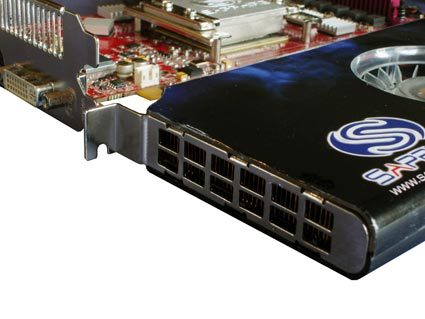Sapphire Gets Hot by Going Cool
Essence Of A Blizzard
In its April 7th press release, Sapphire announced that the card would come out at standard clock frequencies, and the company would allow the market to push the limits. Instead of this initial announcement of a 650 MHz core clock and 775 MHz (effective 1550 MHz DDR) memory speed, however, Sapphire chose to update the production speeds to 675 MHz core and 800 MHz memory. This should show that Sapphire is quite confident in the cooling solution it provides on the Toxic (formerly named Blizzard).
We were not able to obtain a final production unit for review, but we were able to take a look at the performance of a pre-production sample. As you can see, instead of using the large copper plate heat sink and radial fan that comes standard on almost all models of Radeon X1800 and X1900 cards, Sapphire mounted RAM sinks on the memory chips to dissipate the heat, and implemented a liquid cooling system. The core has a special water block attached, making this a single slot card. From the pictures of our test unit, this is obviously implemented on a standard Radeon X1900XTX. You can see the two slot mounting bracket, even though, as just mentioned, the water block only needs the space of one slot.
From initial inspection, the cooler looks like one from Thermaltake: the Tide Water (CL-W0052). When we saw the Thermaltake name printed on the hoses, it confirmed our hunch about the cooling solution. The coolant has a life cycle of 10,000 hours, which is 416 days of continuous operation. The all-in-one radiator, pump and reservoir is the size of a single PCI or PCIe slot, making this a dynamic two-slot solution. Instead of being forced to give up the slot directly below the video card, the cooler can be moved several slots away, even into an open slot. Now users who want their precious PCI slots for a Soundblaster and physics card can have their cake and eat it too.
Get Tom's Hardware's best news and in-depth reviews, straight to your inbox.
Current page: Essence Of A Blizzard
Prev Page Introduction Next Page Essence Of A Blizzard, Continued
